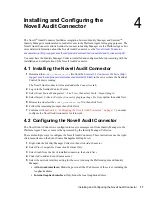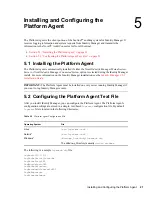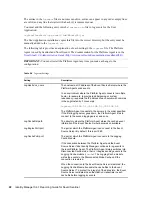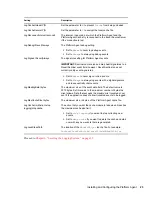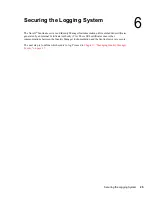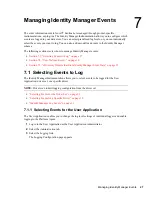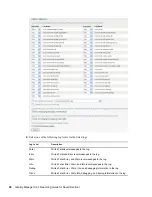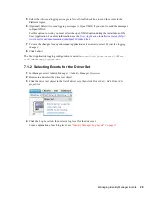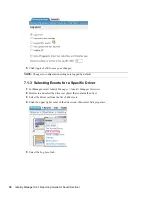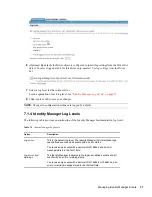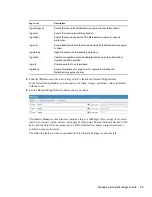
18
Identity Manager 3.6.1 Reporting Guide for Novell Sentinel
no
vd
ocx
(e
n)
17
Sep
te
m
be
r 20
09
Network interface with this IP:
Binds the port only to the specified IP address.
6
In the
Port Number
field, specify the SLS port, then click
Next
.
The default port is 289.
7
Select the option for the client authentication type.
Open:
Allows all SSL connections from the Platform Agent. It does not perform any
client certificate validation or authentication.
Loose:
Validates a client certificates to be a valid X.509 certificate, but does not check if
the certificate is signed by a Certificate Authority.
Normal:
Validates the certificate to be a valid X.509 certificate and also checks to see that
the client certificate is signed by a Certificate Authority.
This option requires a trust store to be imported. The trust store must have the client’s
certificate and the Certificate Authority’s certificate. Click the
Import
button to import the
trust store.
8
Select whether you want to use the built-in server key pair or import server key pair, then click
Next
.
The Novell Audit connector comes with a built-in certificate. You can use it or overwrite it
with your own certificate.
9
Select the behavior of the Event Source Server if it receives move events than the Collector can
parse. The options are:
Drop connections:
The Event Source Server drops existing connections and stops
accepting new connections until the buffer has space for the new messages. This is the
default behavior, because the Platform Agent performs caching when a connection is
dropped.
Drop messages:
The Event Source Server drops the oldest message in order to accept the
new message. These dropped messages are lost and cannot be recovered.
10
Select whether the Event Source Server disconnects an SSL connection with the Platform
Agent if the connection is idle and does not send any data within the set number of minutes.
If you select this option, you must specify the number of minutes to wait before it disconnects.
The default value is 15 minutes.
11
Select whether you want the Event Source Server to request the Platform Agent to send the
signature of the event with the event, then click
Next
.
12
Select
Run
to have the Event Source Server automatically start whenever the Collector
Manager is restarted, then click
Finish
.
13
Repeat
Step 4
through
Step 12
for each Identity Manager server.
To capture all events in your environment, you must have an Event Source server for each
Identity Manager, and the Identity Manager server must have the Platform Agent installed on it.
14
Select the Event Source server to add to the Novell Audit Connector, then click
Next
.
15
Use the default policy or create a custom policy to automatically add or exclude individual
source devices, then click
Next
.
For more information, see “Auto Configuring Event Sources” in the
Novell Audit Connector
Guide
(http://support.novell.com/products/sentinel/doc/connectors/audit_connector.pdf)
16
Finish the configuration of the connector with the following information, then click
Finish
.
Name:
Specify a name for this connector.
Summary of Contents for IDENTITY MANAGER 3.6.1
Page 4: ...4 Identity Manager 3 6 1 Reporting Guide for Novell Sentinel novdocx en 17 September 2009 ...
Page 12: ...12 Identity Manager 3 6 1 Reporting Guide for Novell Sentinel novdocx en 17 September 2009 ...
Page 16: ...16 Identity Manager 3 6 1 Reporting Guide for Novell Sentinel novdocx en 17 September 2009 ...
Page 20: ...20 Identity Manager 3 6 1 Reporting Guide for Novell Sentinel novdocx en 17 September 2009 ...
Page 24: ...24 Identity Manager 3 6 1 Reporting Guide for Novell Sentinel novdocx en 17 September 2009 ...
Page 26: ...26 Identity Manager 3 6 1 Reporting Guide for Novell Sentinel novdocx en 17 September 2009 ...
Page 54: ...54 Identity Manager 3 6 1 Reporting Guide for Novell Sentinel novdocx en 17 September 2009 ...














